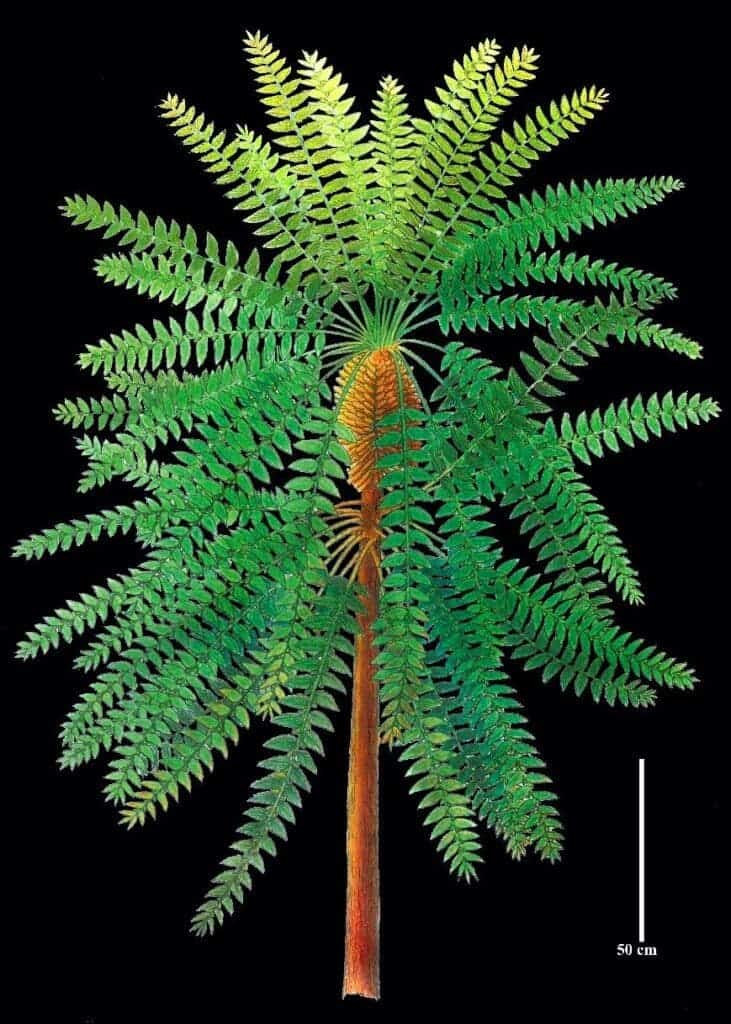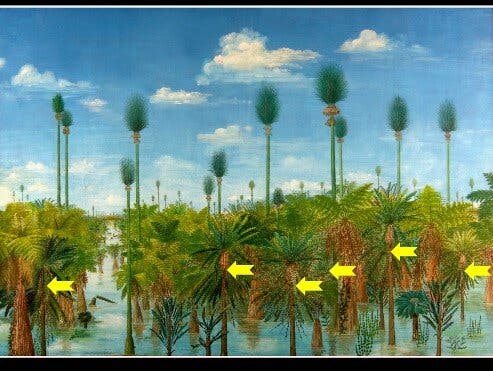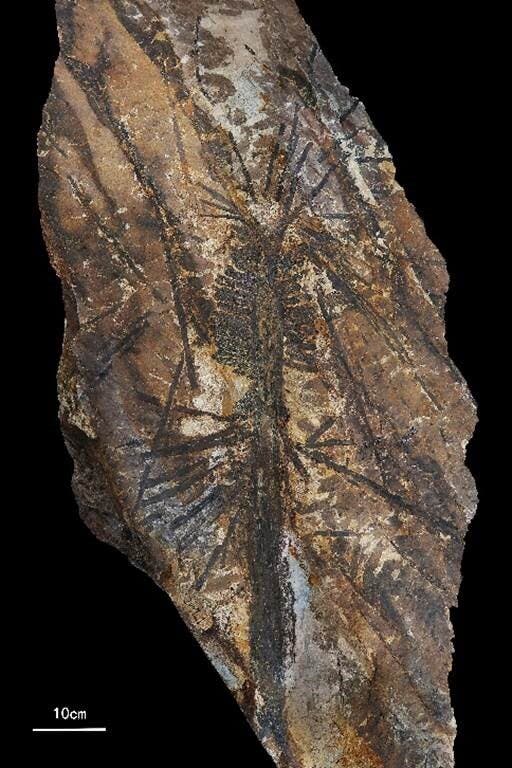
Noeggerathiales, a now-extinct order of vascular plants, were highly evolved members of the lineage that gave rise to seed plants, according to a new study. Researchers looked into fossil plants preserved within volcanic ash fall in China and shed light on the overall evolution of plants – a race eventually won by seed-bearing plants.
The enigmatic Noeggerathiales existed around 325 to 251 million years ago, over a hundred million years before dinosaurs started to emerge. Their relationship with other plant groups has until now been poorly understood due to poorly preserved fossils (plant fossils are hard to come across). They had a tree fern-like appearance, with leaves sprouting from the top of an unbranched trunk, and were commonly found in tropical regions.
Unfortunately for Noeggerathiales, they didn’t survive the profound environmental and climate changes of 251 million years ago that destroyed ecosystems globally. This event, called the Permian-Triassic mass extinction, wiped them out. Out of the two lineages of plants, only one survived: the seed plants which now dominate so much of the Earth.
In a new study, researchers found the “Pompeii of Plants” — a site in China where many Noeggerathiales were conserved as fossils, protected by a layer of ash deposited 300 million years ago. This volcanic eruption probably killed off the forest, but it protected much of it in fossilized form, much like the volcano that wiped off the Roman city of Pompeii preserved the archaeological remains.

The forest, west of the Inner Mongolian district of Wuda, was largely reconstructed by researchers in 2012 – identifying six groups of trees. Now, a group of paleontologists from Nanjing Institute of Geology and Palaeontology and the University of Birmingham looked at the fossils from Noeggerathiales found in China, which were preserved in “exquisite detail”. They concluded that the Noeggerthiales are much more related to seed plants than other fern groups.
“Noeggerathiales were recognized as early as the 1930s, but scientists have treated them as a ‘taxonomic football’, endlessly kicked around without anyone identifying their place in the Story of Life,” Jason Hilton, co-author of the study, said in a statement. The fossils found in China finally settled the group’s evolutionary importance, he added.

Hilton and the group of researchers studied complete Noeggerathiales preserved in a bed of volcanic ash 66 cm thick formed 298 million years ago, smothering all the plants growing in a nearby swamp. The ash stopped the fossils from rotting or being consumed and preserved many complete individuals in microscopic detail, allowing them to be studied.
Lead-Author Jun Wang said many specimens of Noeggerathiales were identified in excavations in China in 2006 and 2007. Leaves were visible on the surface of the ash, which seemed connected to a stem below. The fossils were then extracted to further study them in the laboratory, which took many years. Additional specimens were later found and also incorporated into the research.
“The complete trees are the most impressive fossil plants I have seen and because of our careful work they are also some of the most important to science,” said Jun Wang in a statement.
The study was published in the journal PNAS.


